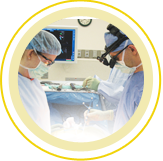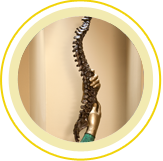Minimally Invasive Surgery
Dedicated to providing patients with minimally invasive options to correct common spine conditions
The surgeons at Spine & Scoliosis Specialists are dedicated to providing patients with the least invasive treatment options available for their condition. When surgery is needed, we often can use minimally invasive techniques that provide safe and effective results without open surgery. Our surgeons have undergone extensive training in these advanced procedures that are at the leading edge of spine care today.
A generation ago, spine operations were always performed as open surgery, resulting in a large incision, a lengthy hospitalization and many months of recovery for the patient. Today, open surgery is still required to correct some spinal conditions, but increasingly we are able to use minimally invasive surgery to correct common spine conditions – resulting in less trauma, smaller incisions and much faster recovery times.
What is minimally invasive surgery?
Minimally invasive surgery is an operating technique that allows us to perform spinal procedures through very small incisions, using a special surgical microscope and other technology, such as the O-Arm imaging system for guidance. This type of surgery allows us to preserve more muscle and other structures of the spine than is possible in open surgery.
Advantages of minimally invasive surgery
Smaller incisions translate into less trauma to the body. That typically results in:
- Reduced pain after surgery
- Lower risk of complications
- Less damage to muscles and surrounding tissue
- Shorter hospital stay
- Smaller scars
- Shorter recovery time
- Faster return to normal activities
Types of surgery that can be performed as minimally invasive procedures
We perform five main types of minimally invasive surgery at Spine & Scoliosis Specialists:
- Spinal fusion – performed most often for spondylolisthesis and degenerative disc disease
- Kyphoplasty – performed to repair fractures
- SI joint fusion – performed to help painful conditions of the sacroiliac joint
- Microdiscectomy – performed to repair herniated discs
- Cervical foraminotomy – performed to repair cervical disc herniations and stenosis
Ask your doctor if minimally invasive surgery is an option for you.



